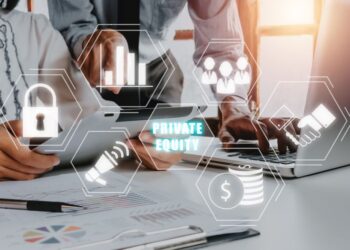In a professional context, a sandbox is a framework that allows an event to transpire independent of real-world limitations. As the term suggests, creative impulses enjoy a space to be exercised, allowing businesses to experiment with abstract ideas.
In this case, Model Rule 5.4 will be tested in Arizona, Utah, and California. What was once discussed as an aspiration now portends consequential change. The sandbox will address some of the concerns state bars and like-minded attorneys have struggled with over the decades. Instead of debating on hypotheticals that lack data to back either argument, law firms can now test their models and ideas to better understand their place in a dynamic market.
How to restructure attorney compensation so that it rewards value and not inefficiency? Will raising capital provide the needed balance to the capital structure of a law firm? Will Alternative Business Structures (ABS) increase access-to-justice? What role will vertical integration play in the legal community? Solving these variables should spur an insightful discourse between state bars, lawyers, clients, and potential shareholders.
For those unfamiliar with Rule 5.4, it is an archaic restriction placed on the legal community by state bars that prevents them from raising capital from investors. Law firms are left to raise capital from other lawyers (who may accumulate debt themselves to fund these efforts) in addition to seeking loans from existing banking partners, skewing their financial health and capital structure.
According to the concerns of state bars, the purpose of Rule 5.4 is to prevent attorneys from favoring shareholders over their fiduciary duty to represent their clients. Although there are other reasons, it all boils down to the unhindered independence of an attorney. Nonetheless, these arguments are mostly fallacies with negligible evidence to back them. Misleading or corrupt behavior in the C-suite is likely embedded in the underlying dysfunctional corporate culture, which is far more concerned with serving its self-interests, rather than from raising capital. Rule 5.4 can be classified as Malum Prohibitum, which is akin to posting a speed limit on a runway.
That traditional law firms operate in a closed-loop financing market means no established record between investors and firms. A sandbox conjures a smoother medium to introduce investors to law firms by modeling a multidisciplinary practice or ABS. In case of doctors’ offices, they participate in insurance networks whereby patients or businesses pay premiums to insurers, and those covered can access their network. ARAG and MetLife offer memberships that lawyers can join without fee and handle cases suited to their practice. Beneficiaries can choose an insurance plan befitting their needs and budget. This model may expand access to legal representation by lowering costs to clients and making the experience more manageable. Furthermore, this ABS closes the asymmetry between investors and Next-Gen law firms.
Caveat emptor: pursuing a sandbox should be done in earnest. Excessive spending on research and development (R&D) does not guarantee innovative market strategies or winning business models. A coherent and robust taxonomy should be established before conducting experiments. Each node of information enables firms to refine and tailor their approaches to building a Next-Gen law firm.
This process entails playing with certain properties of a sandbox. If the sandbox poorly represents real-world conditions, the data produced is worthless. Accurate results bond Next-Gen firms to suitable strategies and models. At this stage, the sandbox turns into a value accretive application. As it grows in capabilities, it can provide more accurate answers for more intricate projects like artificial intelligence’s role in compliance or emerging risks and opportunities in the global marketplace.
In aggregate, the value of R&D for a Next-Gen law firm is its ability to stay ahead of the curve and surgically dominate a target market through accurate representations of real-world conditions.
For example, Venezuela’s economy, mostly backed by heavy crude oil (light–sweet crude oil carries a premium while heavy crude oil trades at a discount and is more difficult to process) has sparked hyperinflation of more than 50,000%. This is not surprising with regard to South American markets. However, the opportunity to create a monetary union (i.e., Eurozone) may be overlooked in times of indefatigable distress.
In this scenario, South America has adopted the European model, established an independent central bank (i.e., European Central Bank), and created a new common currency (i.e., Euro) for member countries to mitigate idiosyncratic risks pertinent to individual economies. In theory, this may resolve the hyperinflation Venezuela is currently experiencing.
A Next-Gen law firm with a dedicated analytics team casting a wider net for data and information acquires a broader forecast of the aforementioned monetary union than traditional law firms. This favorably positions practitioners in markets that need foreign lobbying representation, structuring multilateral trade frameworks, and facilitating mergers or joint ventures.
For firms in jurisdictions other than Utah or Arizona, a sandbox need not be created by a state bar. Law firms in all jurisdictions can create their own sandbox through different measures. Firms engaged in diverse practices can divest divisions, spin-off back-office operations, or, alternatively, create special purpose vehicles to manage their own sandbox. Each avenue creates a respective path for traditional firms to assess how to break out of their restrictive business models and further their understanding of risk-averse portfolios.
The goal is to assuage operational uncertainty by providing clarity and data to all parties involved. If the endeavors accrue value, shareholders are left feeling exultant. The newfound success with initial investors becomes the bedrock to long-term relationships, securing successive capital commitments, and attracting new investors for future projects. Evaluations of this scale alter operations to promulgate sustainable managing styles by suppressing complacency when interacting with stochastic markets and promoting the untapped value within a firm’s portfolio and talent pool. This is the common baseline of a risk-averse business, it is a merger between adaptability and persistent relationships.
In any event, the state of being risk-averse has more depth than the legal community realizes. When management considers its risk appetite and risk threshold, how does it know it chose the appropriate gauges to provide feedback in their risk framework? A firm that digs deeper into its risk attitude (how a firm measures and approaches risk) will note that risk is an elusive target materializing in more ways than one. Assets in a free market burdened by excessive risk or phantom strategies are not neatly labeled and stored for management to actively avoid them.
Banks and insurance companies, the poster children of risk aversion, offer the tragic example of the global economic collapse of 2008–2009. They dutifully believed the asset class they were trading maintained risk-averse characteristics, and the few who questioned that logic were unwelcome aberrations. Not a single philosophy or metric can prevail in staving off a financial misstep or the sapping effects of steep recessions. However, a commanding understanding of risks Next-Gen firms possess, risks they ought to possess, risks they should jettison, and risks they must surveil will provide a clear bearing in times of economic distress.
R&D divisions are notably expensive and common primarily to industrial and technology corporations, but this illuminates a neglected aspect: Do modern businesses fit neatly into their respective sectors? Brokerage firms such as TD Ameritrade (currently integrating with Schwab) often act like technology companies than financial services firms. Apple is a consumer retailer and manufacturer. It is difficult in today’s global economy to discern an e-commerce juggernaut from an aerospace and defense company.
Traditional law firms critical of sandboxes and their R&D properties should refrain from labeling it as a liability or unquantifiable risk. R&D is about learning, not plotting every single step a firm will take. For R&D to grow into a productive asset, commitment and follow through are key, including during periods of economic contractions or market turmoil. The strategy here is to build adaptability into the minds of management, associates, and shareholders. The cumulative nature of a sandbox can establish Next-Gen law firms as an exclusive breed meant to lead free markets, not react to them.









